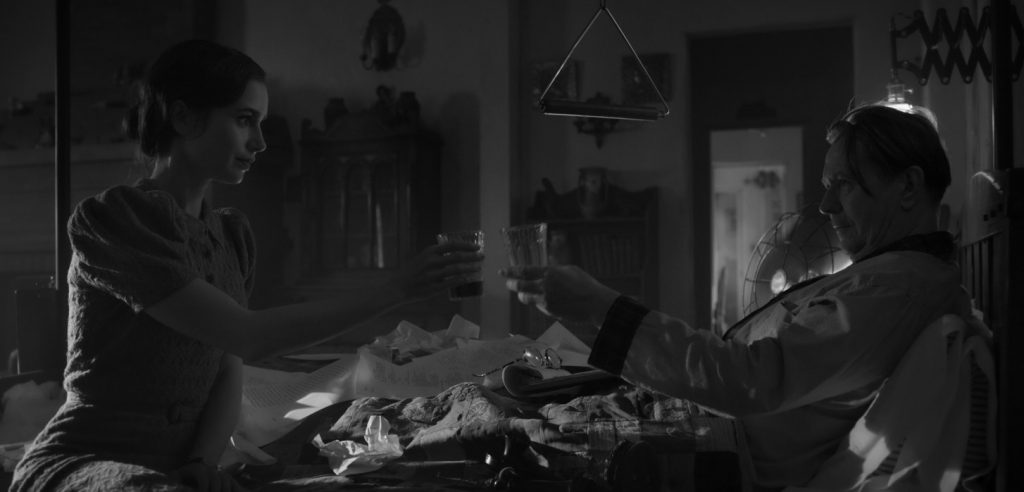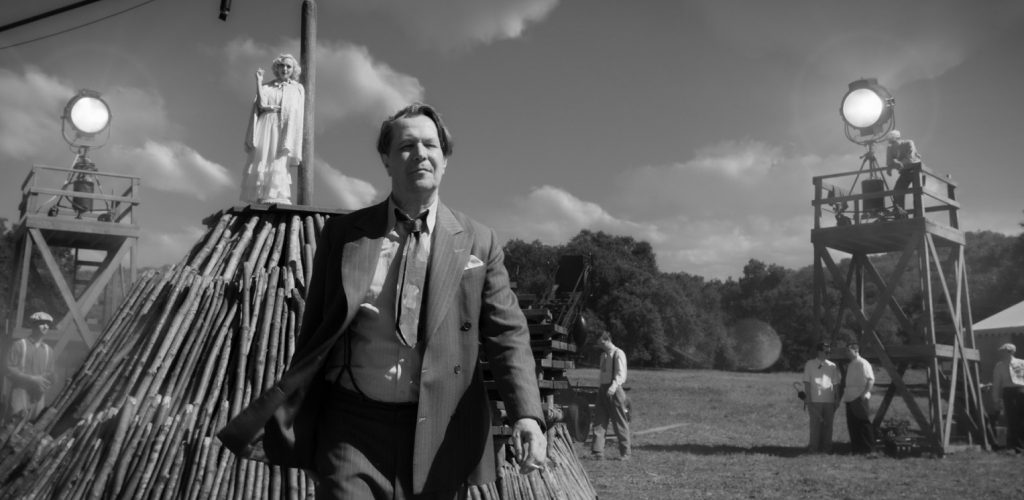
This film debuts Friday, December 4th on Netflix.
Citizen Kane was a landmark film that caused a great deal of controversy upon its release. This was because of the perceived similarity between the movie’s characters and several real-life figures, as well as the use of fresh camera angles and cinematic storytelling techniques. The end results became a classic that is still admired today as one of (if not the) greatest films ever produced? So, what was it like to create the picture and who truly inspired the screenplay? Mank is a biopic that attempts to tell the story behind the story entirely through the eyes of the feature’s co-writer.

The movie cuts between a few time periods in the life of Herman Mankiewicz (Gary Oldman), known to some associates as Mank. It begins with the hard-drinking gambler being hired by director Orson Welles (Tom Burke). The filmmaker has been given total autonomy for his latest project at RKO Studios and Mank, suffering from a broken leg, is sent to remote home to quickly complete the movie’s script. It’s clear to the protagonist’s stenographer/secretary (Lily Collins) that the title character of Kane bears a remarkable similarity to publishing magnate William Randolph Hearst (Charles Dance). As the writer ekes forward on the project, viewers are taken back a few years to witness the beginning and end of Mank’s personal relationship with Hearst and the tycoon’s mistress, actress Marion Davies (Amanda Seyfried).

Admittedly, this film is set in a different era with unusual speaking rhythms that may take a bit of time to get used to. But by the end of the opening act, the sharp-witted jabs and interactions between characters really take hold and engage. Mank sharply delivers astute observations and amusingly uses quips from famous Hollywood personalities to make his points. The character’s disdain for niceties is a whole lot of fun to listen to, as are the exchanges between various characters. Oldman is excellent as the writer, using caustic wit to keep us on the side of an apolitical, flawed and cranky character with addiction issues.
Of course, as the story unfolds serious issues are raised and the feature also benefits from being unflinching in its portrait of the various personalities involved. This includes film studio executives more concerned with personal profit than their own workers. The movie even addresses the gubernatorial race of 1934 and some particularly nasty steps taken by a Republican studio head and Hearst to manipulate the voting public. As more and more of Mank’s experiences are shown, the inspiration for his famous filmic opus quickly becomes very clear. The movie also deals with the interesting attempts made by powerful execs to subtly stop Citizen Kane from moving forward.

The black and white photography by Erik Messerschmidt is absolutely top-notch, with gorgeous images of the characters, while plumes of smoke billow from cigarettes and light streams through windows or blinds. There are also angles that Welles himself would be proud of, including a camera placed at floor level while a coin spins directly in front of the lens. Viewers also get to see the opulent interiors of Heart’s lavish castles and elaborate parties. Everything about the movie, from the lighting to the costumes, look exceptional. The movie wants to whisk us away to a different time period and excels in its efforts to do so.

Frankly, I’m not entirely sure how someone who isn’t familiar with Citizen Kane will respond to this biopic. However, as a reviewer who has seen the film a few times over the years and possesses a very general knowledge of the production, this still manages to be a fascinating biopic. The entire cast are great, the zippy dialogue is a blast to listen to, the movie is incredible to look at and the issues and beefs of the title character addressed in the story are still relevant today. Mank provides compelling background info one of the greatest films ever made and convincingly shows what inspired its co-writer to take shots at the day’s most powerful figures.


